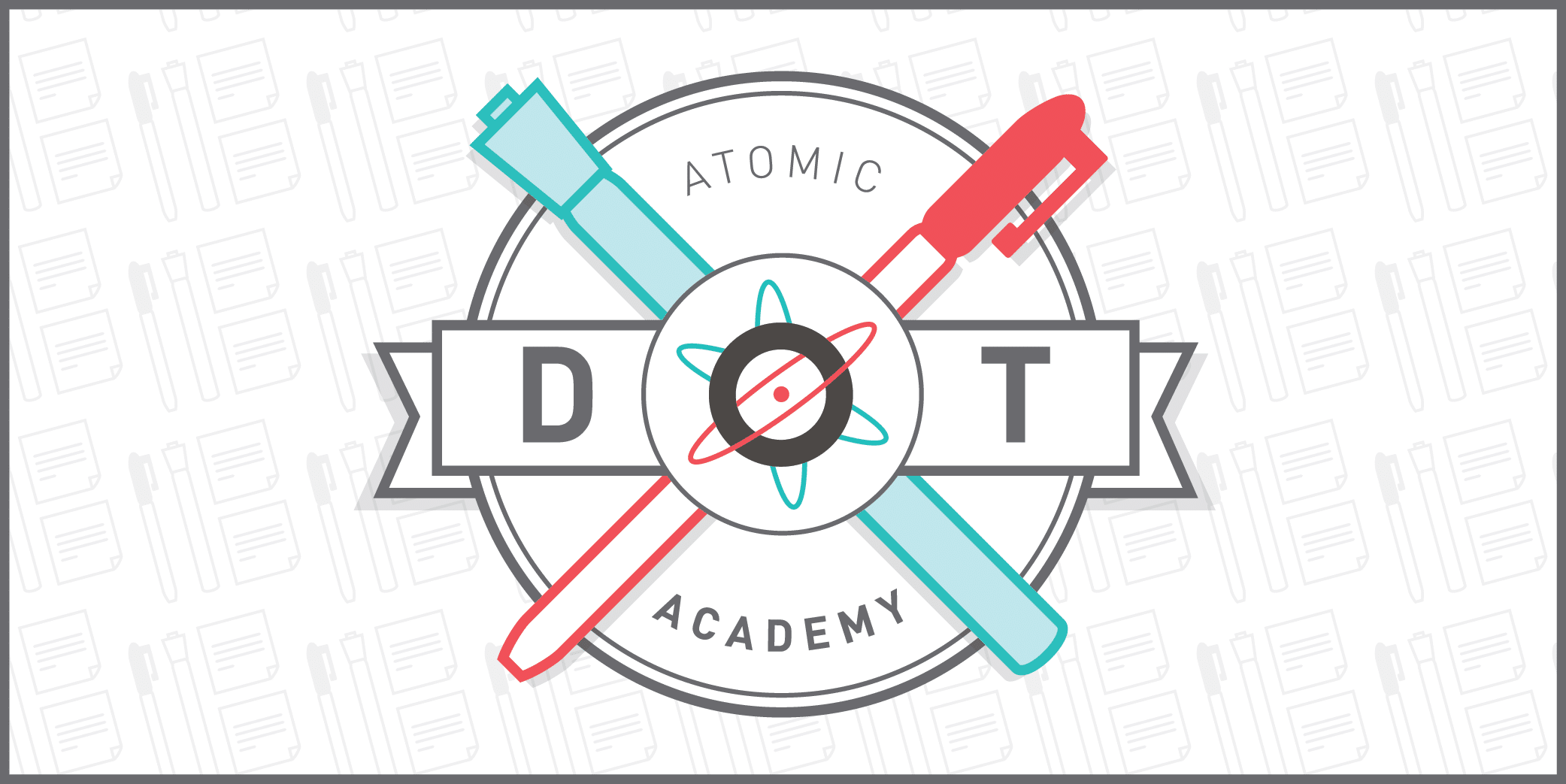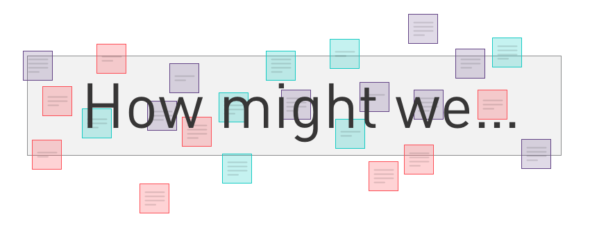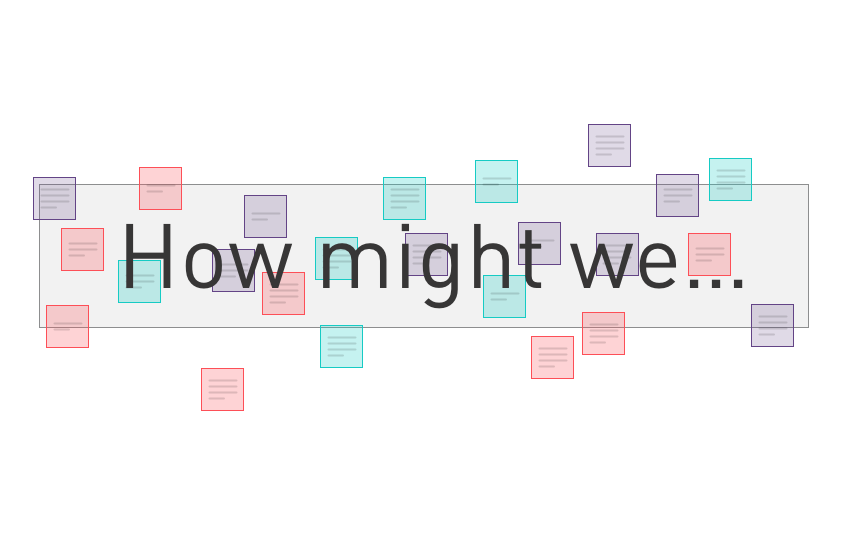
Hoping to turn problems into opportunities for design? Look no further than How Might We. This is a classic Design Thinking activity — and simple, to boot. Begin with a problem area that is challenging for a person/organization/system/environment/etc., and add “How Might We,” reformatting the problem to suggest that a solution is possible.
This is part of our series on Design Thinking Methods and Activities. You’ll find a full list of posts in this series at the end of the page.

| Primary Goal | To encourage brainstorming and a change of perspective |
| When to Use | During any part of a project when fresh ideas are in short supply |
| Time Required | 30-60 minutes |
| Number of Participants | 2-10+ |
| Who Should Participate? | Any project participants, especially those married prematurely to an idea, plan, or decision |
| Supplies | Sharpies and Post-its |
1. Get the Questions Right with “How Might We”
Grab enough Post-its and Sharpies for all participants, and begin framing questions. Each question should start with, “How might we…”
As a facilitator, your role is to guide participants so that questions aren’t too broad or too narrow. You want to unearth a wide range of ideas with unique, specific solutions. For example, “How might we redesign travel?” is too broad, and “How might we create the perfect airplane seatbelt made of recycled pop bottles?” could (potentially) be too specific. “How might we redesign an airline’s safety speech?” is a more appropriately-scoped question.
Stanford’s d.school suggests ways to make the most of “How Might We” by changing the questions’ goal. Here are their question suggestions, plus examples for an airport-centric experience:
- Amp up the good: How might we use the kids’ energy to entertain fellow passengers?
- Remove the bad: How might we separate the kids from fellow passengers?
- Explore the opposite: How might we make the wait the most exciting part of the trip?
- Question an assumption: How might we entirely remove the wait time at the airport?
- Go after adjectives: How might we make the rush refreshing instead of harrying?
- ID unexpected resources: How might we leverage free time of fellow passengers to share the load?
- Create an analogy from need or context: How might we make the airport like a spa? Like a playground?
- Play against the challenge: How might we make the airport a place that kids want to go?
- Change a status quo: How might we make playful, loud kids less annoying?
- Break POV into pieces: How might we entertain kids? How might we slow a mom down? How might we mollify delayed passengers?
2. Generate Solutions
Once you’ve picked one to three “How Might We” questions of an appropriate scope, begin brainstorming solutions with Post-it notes. Ask for one idea or solution per Post-it, and encourage quantity over quality. Have the group generate as many ideas as possible during this time.
Once the allotted time has passed, review all of the ideas and trim them down to the best ones (with another activity like Affinity Mapping or Dot Voting).
Use this simple phrase as a launchpad for your team’s next brainstorming session, and leave a comment below if you’re a veteran facilitator of “How Might We.”
Atomic’s Design Thinking Toolkit
- What Is Design Thinking?
- Your Design Thinking Supply List
- Activity 1 – The Love/Breakup Letter
- Activity 2 – Story Mapping
- Activity 3 – P.O.E.M.S.
- Activity 4 – Start Your Day
- Activity 5 – Remember the Future
- Activity 6 – Card Sorting
- Activity 7 – Competitors/Complementors Map
- Activity 8 – Difficulty & Importance Matrix
- Activity 9 – Rose, Bud, Thorn
- Activity 10 – Affinity Mapping
- Activity 11 – Speed Boat
- Activity 12 – Visualize The Vote
- Activity 13 – Hopes & Fears
- Activity 14 – I Like, I Wish, What If
- Activity 15 – How to Make Toast
- Activity 16 – How Might We…?
- Activity 17 – Alter Egos
- Activity 18 – What’s On Your Radar?
- Activity 19 – The Perfect Morning
- Activity 20 – 2×3
- Activity 21 – How Can I Help…?
- Activity 22 – Cover Story
- Activity 23 – Crazy 8s
- Activity 24 – Abstraction Ladder
- Activity 25 – Empathy Map
- Activity 26 – Worse Possible Idea
- Activity 27 – Pre-Project Survey
- Activity 28 – The Powers of Ten
- Activity 29 – SCAMPER
- Activity 30 – Design Studio
- Activity 31 – Forced Connections
This is an updated version of a post originally published in December 2018.


I have used “How Might We” notes when facilitating a GV Sprint to great effect.
The GV Sprint format advocates using HMW during ‘ask the expert’ interviews, with the note takers selected for their varied perspectives/backgrounds.
The optimism of HWM, with the outsider perspective of this arrangement, has yielded some really great break throughs!
Great series on Design Thinking!
Thanks for your input, Stephen. I love how you incorporated HMW into expert interviews. Great idea! I’ll definitely try that during my next round of user/stakeholder research.
That’s what I appreciate most about these activities, their flexibility. They can be adjusted and reformed to fit the unique need of each project to gain the best information. I look forward to evolving this work over the years. :)
WOW, I am so happy to have found this, thank you!! I assumed you’d gone to a d school — the outline and examples of steps, particularly and with such detail, are really awesome. Thank you!
Hi Jennifre!
Thanks for the kind words. I’m really happy the series is resonating with you. Enjoy!
Hi Kimberly,
I looked through this too lkit a while ago and liked it a lot. It is sooooo helpful and very well described!
One question: I am pretty sure I read the shortsStory / case which belongs to the airport-experience-example somewhere here on your blog but I can’t find it again. Can you help me out here? I woud like to use that example in one of my upcoming workshops. Thanks for your very helpful list of activities!!! Stay safe These days!
Wiebke
Hi Wiebke,
I’m glad these activities have been helpful for you!
I’m not sure which activity you’re referencing, but if you email [email protected] we can continue the conversation and I can attempt to direct you to the right spot.
Stay peaceful and safe out there. :)
Whoa! This blog looks exactly like my old one! It’s
on a totally different subject but it has pretty much the same layout and
design. Wonderful choice of colors!
Glad it’s all resonating with you. :)